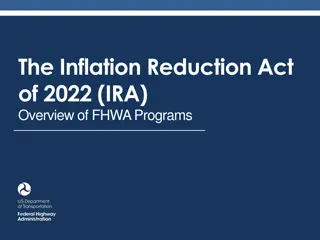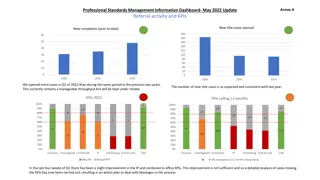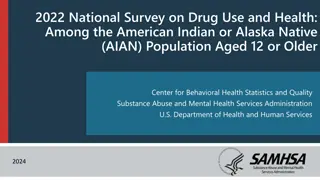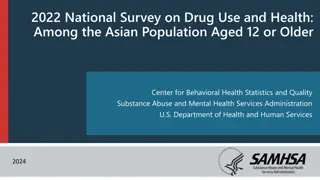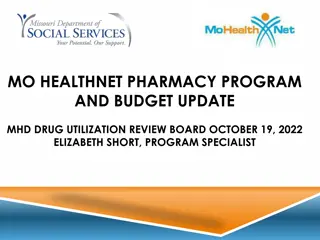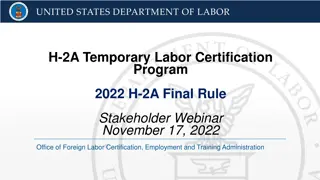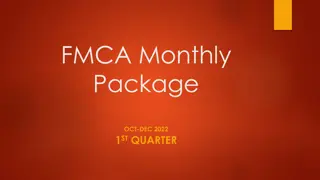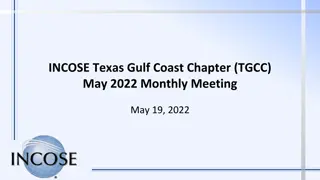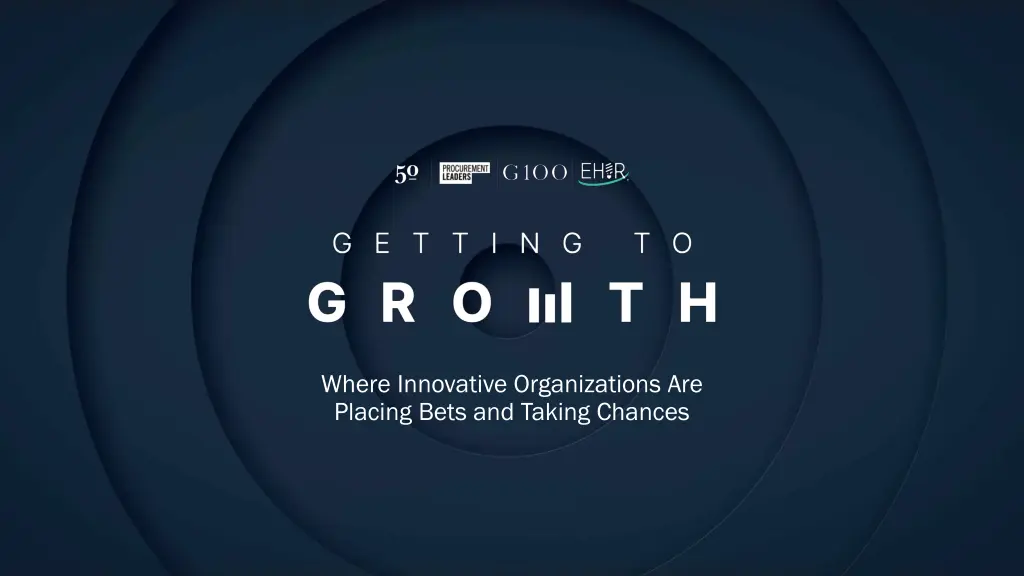
Innovative Strategies for Organizational Growth and Success
Discover where innovative organizations are focusing their efforts for growth and success despite challenges like talent shortages, recession fears, and inflation concerns. Leaders remain optimistic about short-term and long-term prospects, emphasizing the importance of new products, expanding customer bases, and leveraging technology for acceleration.
Download Presentation

Please find below an Image/Link to download the presentation.
The content on the website is provided AS IS for your information and personal use only. It may not be sold, licensed, or shared on other websites without obtaining consent from the author. If you encounter any issues during the download, it is possible that the publisher has removed the file from their server.
You are allowed to download the files provided on this website for personal or commercial use, subject to the condition that they are used lawfully. All files are the property of their respective owners.
The content on the website is provided AS IS for your information and personal use only. It may not be sold, licensed, or shared on other websites without obtaining consent from the author.
E N D
Presentation Transcript
Where Innovative Organizations Are Placing Bets and Taking Chances
Executive summary Leaders are surprisingly optimistic. Leaders are surprisingly optimistic. While acknowledging the current geopolitical and economic turbulence, survey respondents see improvement on the way. Of respondents, 72% rated their companies growth prospects as excellent or good in the next one to three years, with 91% saying the same about the long term (three to five years). Revenue defines short Revenue defines short- -term, but not long Respondents mainly viewed short-term growth in terms of revenue, with 42% saying that s the key measurement. But, in the longer term, they are looking more to profit (30%) and market share (26%) ) as the most significant metric. term, but not long- -term growth. term growth. New products and customers lead the way to growth. New products and customers lead the way to growth. Respondents prioritized adding new products or services, expanding the customer base and improving operational efficiencies as their top three growth strategies. This is notable because organizations are prioritizing investing in growth rather than relying only on cost cutting to do the job. Nor are they depending on passing on price increases; respondents ranked that strategy seventh. 2 2
Executive summary Talent, recession, inflation: the biggest blockers. Talent, recession, inflation: the biggest blockers. We asked our members to rank the topics that were preventing them from getting to growth. Some two-thirds of them named the talent shortage, the looming recession, and inflation as the top barriers far ahead of supply chain delays, geopolitics, and material shortages. Tech and talent: the biggest drivers. Tech and talent: the biggest drivers. Advances in technology, our members believe, will be the most significant accelerator of growth, with 59% ranking that first. In second place, with 54% citing it as a top driver, was an easing of the talent shortage. The fact that the shortage is also seen as a top obstacle to growth shows that there is no consensus on whether the pressure has lessened. The customer still comes first. The customer still comes first. Both in the short and the long term, the customer is the primary stakeholder when making decisions relating to growth. This is a shift from previous research that indicated that employees had taken over as the key stakeholder, suggesting a reversion to typical business perspectives. In the long term, respondents placed more emphasis on boards and investors and less on employees. ESG recedes as a factor. ESG recedes as a factor. Both the growth opportunities of ESG and the complications that new regulations create have been hot topics of discussion among our members. But only 6% said regulations were a top obstacle, and only 30% looked to demand for sustainable products as a growth driver. 3 3
Leaders are surprisingly optimistic. How do you rate your company s short-term (one to three year) and long-term (three to five year) growth prospects? 72% of respondents rated their company s growth prospects as good or excellent in the short term, while 91% said the same about the long term. 1% Short term 18% 54% 26% 1% Long term 45% 46% 8% 1% 0% 20% 40% 60% 80% 100% Excellent Good Fair Poor Extremely poor n=196 4
Revenue is the main short-term growth metric. How does your company primarily define growth in the short term (next one to three years) and long term (three to five years)? 42% of respondents highlighted increased revenue as their primary definition of short-term growth. The figure fell to 26% over the long term, with increased profit and market share becoming more significant. Short term 42% 24% 13% 12% 9% Long term 26% 30% 26% 14% 4% 0% 20% 40% 60% 80% 100% Increased revenue Increased profit Increased market share Other (please specify) Increased sales volume n=219 5
New products and customers lead the way to growth. Please rank the following strategies in order of their importance to Please rank the following strategies in order of their importance to your company's short your company's short- -term (one term (one- - to three to three- -year) growth plans: Respondents ranked new product or service developments as their top growth strategy, followed by expanding the customer base and improved operational efficiencies. year) growth plans: Rank Strategy 1 New product or service development. 2 Expanding the customer base. 3 Improved operational efficiencies. 4 Existing product or service improvements. 5 Digital transformation. 6 Mergers, acquisitions, and partnerships. 7 New pricing strategies. 8 Adding new capacity. 9 Venture investing. 10 Other. n=218 6
Talent, recession, inflation: the biggest blockers. What do you see as the main barriers to your company's short-term (one- to three-year) growth plans? At least two-thirds of respondents highlighted talent and labor shortages, the threat of recession, and inflation as their main barriers to growth. Labor/talent shortages 68% Potential recession 67% Inflation 63% Supply chain delays 41% Budget constraints 36% Geopolitics 33% Interest rate increases 26% Raw material shortages 23% Other 7% ESG regulations 6% 0% 10% 20% 30% 40% 50% 60% 70% 80% n=218 7
Tech and talent: the biggest drivers. Which of the following external factors do you see as most beneficial to your company's short-term (one- to three-year) growth plans? Advances in technology and an easing of the talent shortage represented the most significant external growth accelerators, according to 59% and 54% of respondents, respectively. Advances in technology 59% Easing of the talent shortage 54% Easing of supply constraints 44% Favorable M&A environment 44% Changing consumer spending patterns 37% Growing demand for ethical and sustainable products 30% Other 8% New trade agreements 6% 0% 10% 20% 30% 40% 50% 60% 70% n=218 8
The customer still comes first. Which one of the following stakeholders is most important to your company s decision-making around growth in the short term (one to three years) and long term (three to five years)? 53% of respondents said customers are the most important stakeholders when making decisions around growth in the short term. The figure fell to 45% in the long term, while investors and boards took on more importance. 45% Customers 53% 26% Investors 15% 6% Employees 12% 16% Board of directors 9% 4% Other 5% Suppliers 5% 2% Communities 1% 0% 10% 20% 30% 40% 50% 60% Long term Short term n=210 9
Where Innovative Organizations Are Placing Bets and Taking Chances


